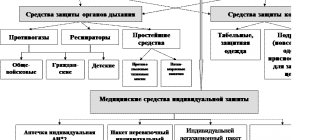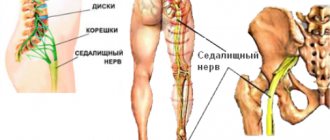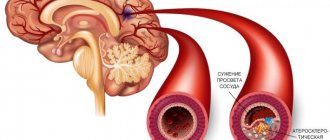If you live with a dog, you probably know when he is happy or sad, right? Of course you do. Even the scientific community recognizes that dogs have emotions—even though scientists cannot directly know what dogs experience. People have maintained a close relationship with dogs for centuries. In 1764, Voltaire remarked: “Nature seems to have given the dog to man for his protection and for his pleasure. Of all animals, she is the most loyal: she is the best friend a person can have.”
Research has shown time and time again the positive impact a dog can have on your life. A study of 975 dog owners found that during times of emotional distress, most people are more likely to turn to their dogs rather than their moms, dads, brothers, best friends or children.
Probable reasons for the formation of a phobia
As you know, fears do not appear out of nowhere. Many people have their weaknesses: some are afraid of insects, others of fire, and there are also those who are horrified at the sight of a Pekingese.
A person cannot have a phobia of dogs from birth either. Typically, the origins of a panic attack begin in early childhood. Fear of dogs can arise for the following reasons:
- From early childhood, parents reacted too strongly if a dog approached their child. Accordingly, gradually a person developed an instinct that made him panic at the sight of his four-legged friend.
- The kid was simply forbidden to approach the dogs, arguing that the animal could attack, bite, scratch, and so on. Fear of pain and potential danger is also firmly anchored in the subconscious.
- Display of scars resulting from contact with animals. It doesn't have to be parents. If one of the relatives or friends who often communicate with the child talked about how negatively the meeting with the dog ended, a response arises - fear.
Panic attack - what kind of beast is it?
Physiologically, a panic attack looks exactly the same as activation of the nervous system in response to a direct threat to life. For example, when attacked by a predator. The body releases adrenaline and other hormones into the blood, thanks to which it mobilizes forces for escape and protection. However, a panic attack occurs when there is no threat! In a seemingly empty place. Against the backdrop of complete well-being. The psyche suddenly decides that it is necessary to launch a cascade of “saving” reactions, and it doesn’t matter what consciousness, that is, you personally, thinks about this. The symptoms of a panic attack are:
- fear of death;
- increased heart rate;
- suffocation, shortness of breath, feeling of lack of air;
- dizziness;
- loss of balance, deterioration in coordination of movements;
- increased sweating;
- abdominal pain, nausea, diarrhea;
- changes in hearing and vision;
- derealization, depersonalization, fear of going crazy.
Understanding how to treat panic attacks primarily comes from understanding the causes of their occurrence. More on this below.
What the unconscious hides
Let me make a reservation right away that the unconscious does not hide anything shameful or terrible about you. The fact is that the unconscious is, in principle, hidden from consciousness. A person lives and does not know that there is a huge depth in him, and panic attacks are just the tip of the iceberg. Deep down is the fear of death.
You will say that all people have a fear of death. In certain situations, yes. But no one will argue that people with panic and anxiety disorders have the highest emotional amplitude. And their fear of death is so strong that it literally knocks out traffic jams. Panic, horror, absolute hell - this is such a nightmare. Panic attacks occur more often in women because they are more emotional.
Yuri Burlan at the training “System-vector psychology” defines them as people with a visual vector. This is one of eight possible vectors of the psyche. Each vector is a set of specific mental properties and characteristics inherent only to it. Normally, a person with a visual vector is an empath. He subtly senses the emotional states of other people, is able to cry and empathize with them, knows how to sympathize and help those in trouble. His tears are close, he lives by feelings, and he needs love like air. Beauty, love and tears - and no panic attacks. This is the norm. What about pathology?
Causes of panic attacks
Not all people with a visual vector have panic attacks. If you have found a visual vector in yourself, then I have good news for you: you can independently treat panic attacks.
More on this below, but now let's talk about the reasons.
1. Traumatization of the visual vector in childhood.
Perhaps this is the main reason. A child with a visual vector is born with the basic emotion of fear of death. Then he learns or does not learn to take his fear out; this is always a matter of proper upbringing and development. What does it mean to bring fear out into the open? Emotion for oneself is the fear of death. Emotion for another - empathy, emotional connection, love - this is taking your fear out. When a child manages to feel sorry for a teddy bear, fairy tale characters, sympathize with animals in trouble, and then help unfortunate people, then he grows up to be a humanist. His sensuality is not focused on himself, it is directed outward and thus gives him a range of positive experiences.
If the child was frightened, forbidden to cry, and not allowed to show his emotionality, then the fear is not brought out. As an adult, such a person lives a poor, anxious life. The fear of death remains with him forever. Nevertheless, psychotraumas are treatable, which means there is every chance of curing panic attacks!
2. Non-realization of the properties of the visual vector.
This is no longer about a child, but about an adult. Realization of the properties of a vector is actions aimed at using the properties of the psyche as prescribed by nature. In each vector, the implementation corresponds to its properties. In the visual, it is sympathy, empathy, love, which arise from emotional connections. A person may not be able to build healthy relationships for various reasons.
Unhealthy emotional connections result in hysterics, emotional dependence, anxiety for others, even panic. Each person with panic attacks has unrealized properties of the visual vector. Lonely visual people cannot fully demonstrate their qualities, because their use is possible only among people. And fears and panic significantly limit socialization.
3. Breaking the emotional connection.
It happens that a person loses a significant emotional connection and thus loses the implementation of the visual vector. From overstress, he can fall into fears and panic. Sometimes this condition drags on, leading to panic disorder and full-blown panic attacks. Examples of breaking an emotional connection:
- divorce, separation,
- death of a loved one,
- changing of the living place,
- death or loss of a pet.
4. Fixation of a traumatic situation.
A panic attack may first occur in a specific situation or place. For example, in the subway, elevator, airplane, on a bridge, on attractions, when driving a car, while waiting for a doctor, at a height, when seeing a spider, a dog, when immersed in water, in a fire. The list can be endless, just like the situations in our lives. The psyche remembers the conditions for the occurrence of a panic attack, and then, as if on a click, it starts it again and again. The initial situation was always associated with fear, fear for one’s life.
Again this fear of death! Is he being treated?
How to treat panic attacks
How to treat panic attacks at home
The goal is to try to turn your emotionality towards an external object. It’s great if tears flow at the same time. There is no need to be ashamed of tears; it is advisable to cry your fill. It will be easier to trigger your emotions if you watch a movie or read a book that you can’t help but burst into tears.
But this is more likely an effective prevention of new attacks and anxiety in general, rather than a treatment.
It is important that films evoke strong feelings and empathy for the characters, drama or melodrama, for example, with talented, sensual actors. You can watch “The Cranes Are Flying,” “Life is Beautiful” and other films.
From books, choose classic works. Classics have a number of advantages: it is a rich language that makes you involuntarily imagine what is happening on the pages, and brilliantly accurately written characters, as if from life, and the difficult fates of the heroes. There are many options here: Hugo, Dostoevsky, Tolstoy, Kuprin. Prefer books to films. Reading classical literature puts both thoughts and feelings in order. Train yourself to enjoy reading.
Now we need to move from imagination to action. Find someone in your environment who needs help. This could be a single pensioner, a mother of many children, or a disabled person. Help with things: take them to the clinic, go to the store, clean the house, babysit the children, do something together. Try to sensually understand the problems of this person, let you be united by common emotions and experiences. Gradually you will notice that there are fewer anxious thoughts, a calmer, more joyful state. A visual person is endowed with a unique psyche not to fear for himself. He has so many talents to help make the world a better place for everyone.
What if you can't follow these recommendations? Sometimes panic attacks simply do not allow you to live normally and force yourself to empathize with someone - beyond your capabilities, because you yourself feel very bad. Even if you manage to cry over a book, then the person closes it and what next? After all, life is lived according to the same scenarios.
Types of cynophobia
There are two main types of cynophobia: imaginary, or false, and true. It is in the presence of a true phobia that fear appears when meeting a four-legged friend. This form of phobia can have the following manifestations:
- fear of only large or only small animals;
- fear of a specific breed, for example, Alabai;
- fear of meeting a pack of stray animals;
- fear of pain. In other words, a person is afraid of being bitten.
In addition, a phobia can manifest itself as a fear of contracting a disease as a result of a bite, such as rabies. A true phobia manifests itself in the form of a panic attack, which is difficult for a person to control.
The psychosomatics of a false phobia are much more complex and manifest themselves as a mental deviation. In this case, the person has an aggressive attitude towards animals. There is no difference in breeds or sizes. Many psychologists believe that the manifestation of a false phobia is a reaction to concealing one’s own sadistic tendencies.
Development of phobias against a background of panic
Panic attacks are initially a consequence of the fear of death - thanatophobia . Against this background, other phobias may develop; we list some of them:
- agoraphobia - fear of open spaces;
- Cardiophobia - fear of cardiac arrest;
- agyrophobia - fear of going outside;
- gelotophobia - fear of being ridiculed;
- anthropophobia - fear of people;
- maniophobia - fear of mental illness.
- amaxophobia - fear of driving;
- claustrophobia - fear of closed spaces;
- demophobia - fear of crowds.
The real consequences of panic attacks
The main danger of anxiety disorder is disruption of socialization. A person who knows that an attack will overtake him, for example, on the street, is afraid to leave the house - this is normal and logical behavior in such a situation. And unpleasant consequences in the form of disruption of the gastrointestinal tract (loose stools, frequent urge to go to the toilet), stiffness of movement (or, on the contrary, a feeling of watiness) only aggravate the situation.
The awareness that a panic attack will strike at any moment makes a person completely incapable of any work or contact with other people. By closing himself off, being afraid to leave the house, a person further complicates the symptoms, because he unconsciously agrees with his panic fear: “If I go outside, I will die (faint, have a heart attack, go crazy, etc.).” Such behavior only reinforces in a person a false belief in his own powerlessness and defenselessness. And, as a result, panic attacks become more difficult.
Signs of cynophobia
If we talk about a true phobia, then the main manifestation will be uncontrolled, panicky fear. Seeing a pet, a person begins to experience a whole range of negative emotions. There may also be physical manifestations of panic.
The most striking signs of a phobia:
- panic attack, uncontrollable horror even in front of the most harmless animal;
- there is a desire to escape from the source of danger as soon as possible;
- the person begins to choke, he lacks air;
- tinnitus, you can hear your own heartbeat;
- tremor in the limbs;
- increased sweating;
- noticeable pressure in the chest.
At the same time, if the source of fear leaves a person’s field of vision, he will begin to gradually calm down and return to normal. If the phobia is in a more severe stage, paranoia appears.
Help from true friends
Many modern people are familiar with panic attacks. This is a very unpleasant illness, which medications and visits to a therapist cannot always combat. Each person has his own reason for panic, so it is impossible to cure everyone in the same way. Amber Aquart is no longer afraid that an attack will take her by surprise. She has two loyal dogs with her, who are trained to stop an attack when it starts.
Oakley and Tucker are next to Amber and monitor her condition. Sometimes people are afraid of flying, heights, crowds and other phobias. They themselves cannot cope immediately. But if a trained animal is nearby, then it knows how to behave correctly.
So, Amber had a panic attack at the airport, but the dogs were nearby. They immediately noticed the first signs of concern and helped the owner. They rather distracted her and also removed her hands from her face. The woman quickly came to her senses, and the attack could not become severe.
Can a dog sense a person's fear?
When thinking about how to get rid of the fear of dogs, a completely logical question arises: can an animal feel the horror experienced by a person? The opinions of experts on this issue have always differed.
Science has long proven that in moments of intense fear, the human body releases large amounts of adrenaline. A dog's nose can sense such a change, but this does not mean at all that the animal will immediately rush to attack.
It should be understood that dogs do not respond to a specific hormone. In the standard sense, a dog is not able to “smell fear”. Everything depends on the person’s further behavior. Sudden movements and an attempt to escape are what can provoke an animal to attack.
How to behave when you see an aggressive dog
There are quite a lot of rules on how to behave in front of an aggressive animal in order to avoid causing harm. What you should pay attention to:
- Sight. You cannot make eye contact with the animal. This behavior is an open challenge.
- Body control. Under no circumstances should you wave your arms or move suddenly.
- Facial expressions. The dog will perceive a smile or an attempt to “growl” as a grin and rush to attack.
A possible way out of such a situation is to throw an object to the side. The dog will become distracted and most likely lose interest in the person.
Pet behavior
The role of the olfactory system is often underestimated. Perhaps because we ourselves use visual contact to a greater extent. For dogs, the world around them is represented by a variety of smells that convey information to them. According to the results of the research, experts found that if the owner is happy, then the same mood is observed in his dog. And if a person experiences fear, a dog also feels it at the sight of strangers.
How to remove “neglected” fears
There are many ways to overcome fear. However, an advanced case must be treated. In some cases, a person may need specialist help and medication.
Exercise "Achilles' heel"
This exercise will require help from family and friends. It is necessary to interview them about the encounter with an aggressive animal. If there are those who actually experienced a similar situation, it is necessary to write down all the emotions, experiences they experienced, and most importantly, how they behaved in a similar situation.
Then a description of your own behavior and feelings is compiled. A comparative analysis is carried out with what a person suffering from a phobia and his acquaintance experience. What are the similarities and what are the differences. All this is necessary to formulate the thesis: “Unlike other people, when I meet a dog I experience...”
It is precisely this feeling that will be the “Achilles heel”. The benefit of identifying the main point is that a person will be able to simulate another situation in which the outcome will be positive.
Psychological techniques
Seeing a psychologist is the most reasonable way to deal with a phobia. There are several options for treating fear:
- Correction of attitude towards the threat. The specialist finds the main component of the phobia and changes its perception.
- Forming the ability to adequately respond to a situation. This method is commonly called rational psychotherapy.
- Relaxation is a special relaxation technique.
- Hypnosis is an effect on a subconscious level.
Help from a psychotherapist
Drug treatment includes special potent drugs aimed at suppressing pronounced emotions. Antidepressants are commonly used. The child is not prescribed medications. In this case, only working with a psychologist is possible.
Fear of dogs is an unpleasant disease that significantly affects a person’s life as a whole. Therefore, it must be fought with all available methods.
Source: gafki.ru
Therapy dogs
These animals are trained because they were handled by specialists. They immediately notice that the person is feeling unwell. Dogs feel an increase in heart rate and breathing. Their task is to interrupt the attack. The dog nuzzles the person's face and distracts him. Amber even recorded a short video of how her pets helped her. It quickly became popular, as many people are familiar with this disease.
View gallery
Amber has two dogs, but Oakley handles the main tasks. The dog quickly reacts to the owner’s condition. When the woman took these dogs to treat her illness, her life became much better. Amber was able to move around much more freely and get treatment for her phobias. Therapy with dogs has long helped with a wide variety of mental and nervous disorders. Even children with autism are encouraged to spend time with dogs. Animals help not only with loneliness, but also with many diseases.
View gallery
They only bite strangers
The problem of stray animals, despite the work of animal rights activists and catching services, is relevant not only for provinces with a large private sector, but also for modern megacities. Car parks and gas stations, construction sites and garages become havens. Often, dogs fed by caring citizens settle near high-rise buildings. Usually they run away when they see a person, but in the spring everything changes. The so-called period of “dog weddings” begins. Animals gather in packs and become unpredictable.
“Stray dogs behave aggressively mainly when a person enters their territory,” says Elena Bronskikh. — Animals usually set up their rookery away from people, in the outskirts, in garage cooperatives. And they zealously protect it from strangers. It is extremely rare for attacks to occur in densely populated public places. In such cases, a stray dog can only sniff you and lead you harmlessly down the street.”
Dog handler Elena Bronskikh, together with German shepherds, saves people in emergency situations. She warns, but even a domestic dog can attack a passer-by if it has been poorly raised. Photo: From personal archive
Victims of the deadly virus
Another cause of inappropriate behavior may be rabies. In the Southern Urals, rabies quarantine has been periodically introduced in various territories since the end of winter, including in Chelyabinsk itself. In addition to foxes, sick dogs are also carriers of the disease. To keep pets safe, many municipalities have declared Rabies Prevention Month. At this time, veterinary stations vaccinate animals free of charge against the virus, which in most cases is fatal for animals and people.
“You can see a mad dog right away. She looks sick, drooling from her mouth, and has inappropriate behavior,” notes the Chelyabinsk dog handler.
If a pack of dogs has settled near your home, you should contact the animal control service. So, in Chelyabinsk this is the municipal enterprise “GorEcoCenter”. If previously stray dogs were immediately killed with a huge dose of sleeping pills, now they act much more humanely. Everyone is brought to the veterinary infirmary. There they are examined by a veterinarian, and if the animal is not dangerous, anyone can take it home.
There's no use in running
If you notice a pack of dogs nearby, then most likely you have entered their territory. Don't push your luck and change your route. When there are puppies nearby, conflict certainly cannot be avoided. Animals will instinctively rush to protect their offspring.
“They sense people’s fear and get a thrill from it. Therefore, when meeting an angry dog, do not look into its eyes, do not shout or wave your arms - this is a reason to attack,” warns Elena Bronskikh.
Try to have the dog bite the scarf or bag that you hold out in front of you in advance instead of you. Photo: pixabay.com
A dog preparing to attack has its tail tucked, its back hunched, its stomach drawn in and its grin visible. Say some commands, like “Ugh!” and “Back” are useless. Stray animals are not trained to do this. You shouldn’t run either, because the dog will catch up anyway.
“Move back slowly, do not turn your back to the dog. Look straight ahead, as if on top of the animal. Without sudden movements, raise your hands in front of you, it is advisable to take a bag, backpack, umbrella, hat or mittens - any item you have that, if attacked, you can let the dog bite instead of you,” the dog handler advises.
Usually a dog only needs to bite something once and it immediately runs away.
“When attacking, try to maintain your balance and not fall, otherwise you will open up all your weak points to the enemy,” says Elena Bronskikh. – If she bites and doesn’t let go, apply painful pressure on the eyes and nose, hit her under the tail and on the genitals. If the dog is wearing a collar, put your hand under it and try to lift the animal.”
When help arrives: tell them to drag the aggressive dog away, holding it by its hind legs. If you have even minor wounds, consult a doctor immediately.
Source: chel.aif.ru
What is “cinephobia”
Cynophobia is the fear of dogs, both street and domestic. The object of a phobia can be not only the animals themselves, but also pictures, photographs of dogs, stories and any mention of them. This type of phobia has 2 subtypes:
- adactophobia – fear of being bitten;
- Rabiephobia – fear of getting rabies.
According to the World Health Organization, about 3.5% of the world's population suffer from cynophobia. Children and people under 30 years of age are most susceptible to it. In rare cases, fear of dogs accompanies a person throughout his life.
Psychologists distinguish between true and false cynophobia. Some individuals with mental disorders try to justify their carnage towards dogs, hiding behind fear of these animals.
True cinemaphobes are predominantly non-aggressive. When meeting animals that cause fear, they prefer to walk around them a kilometer away or run away.
Symptoms
Cinemaphobes constantly experience a feeling of increased anxiety, although there are no visible reasons for concern. A person is always in tense anticipation of a dog attack. He can't get rid of the obsessive thought of a potential threat.
For people suffering from cynophobia, it is enough to simply mentally imagine an aggressive dog and they will experience the following physical symptoms:
- increased sweating;
- tachycardia;
- arrhythmia;
- feeling of tightness in the chest;
- nausea and dizziness;
- muscle spasms;
- trembling in the body.
The psyche of cinemaphobes also reacts to irrational fear; they feel:
- confusion in thoughts;
- loss of control over the situation;
- persistent desire to run away and hide;
- constant feeling of threat;
- obsessive negative thoughts and pessimism;
- irritability and causeless aggression towards others;
- fear of death.
In severe cases of phobia, panic attacks occur periodically. In this state, a person is seized by uncontrollable fear. He doesn't understand what's happening to him. It seems to him that he is dying. And even the distant barking of a dog can cause a panic attack.
Excessive and uncontrolled fear of dogs can make life very difficult. A person stops leaving the house because he is afraid of meeting stray dogs.
A panic attack can mimic the symptoms of COVID-19: how to cope?
Sweating, shortness of breath, a feeling of impending death are symptoms of a panic attack. During the COVID-19 pandemic, quarantine and self-isolation, they can be a real challenge for people experiencing them for the first time. A panic attack is a condition where fear or anxiety causes sudden physical symptoms for no apparent reason. The exact manifestations may vary, but classic signs include some of the same symptoms associated with COVID-19: chest pain, shortness of breath, feeling feverish or chills, Popular Science writes.
“People often experience symptoms of a classic panic attack, where they feel like they can't breathe. This usually happens because you take very fast, shallow breaths. This minimizes oxygen consumption and forces the muscles to tighten, says Sheila Addison, a licensed marriage and family therapist in Oakland, California.
Concentrating on your breathing using some techniques will help correct this. Lie down and relax, start counting to four while inhaling, then pause, exhale slowly, counting to four. Inhale again for a count of four, pause, exhale slowly for a count of four, and repeat several times. This will help stabilize the body and normalize the supply of oxygen.
Once you no longer feel short of breath, your body should stop tensing. The panic probably won't go away overnight, but it will gradually dissipate.
When it comes to people who have previously been diagnosed with an anxiety disorder, the first recommendation is to stick to your normal routine during a flare-up. This is the most important thing, because during times of stress and sudden changes in circumstances, people stop doing what is good for them.
If you know that exercise helps reduce anxiety, continue to exercise - run on the treadmill, do yoga. If you have already been prescribed medication, continue taking it.
Fate is in your hands
How to plan your life
If journaling has been an important tool in managing your stress, don't stop journaling. This may sound obvious, but if your anxiety has been on the rise lately, stop and take inventory of your usual strategies and routines. Maybe you stopped doing something.
It's also important to eat well, get plenty of sleep, and tune out the news every now and then to give your brain a rest.
If you're experiencing anxiety for the first time, try meditation. There are plenty of apps for beginners. But according to Dr. Addison, the practice should leave you feeling good and better than you did before. Otherwise, it is not a suitable technique and should not be continued.
The doctor recommends the writings of Pema Chodron, an American Tibetan Buddhist nun, to help cope with difficult times.
“I’m not a Buddhist, but a lot of her work really resonates, especially now. She talks a lot about how we like to be confident, in control, with choices. But when we find ourselves in situations with rapidly changing circumstances and an unpredictable future, our first reaction is to resist it as much as possible. By doing so, Chaudren argues, we are only adding to our own suffering,” says Edison.
Causes of fear
Most often, fear of dogs develops in childhood or adolescence. Without psychotherapy, fear can remain for life.
Interestingly, people who have been attacked by dogs do not necessarily become film-phobes. They, of course, take a long time to recover from their experience. They may need help from a psychologist. But they have no pathological fear of these animals.
People who have been bitten by dogs experience fear mainly of large and aggressive animals. At the same time, they treat puppies or small friendly dogs with tenderness and trepidation. They do not feel anxious when they see pictures of dogs or hear dogs barking.
Cinemaphobes are afraid of absolutely all dogs and everything that reminds them of them. It doesn't matter the breed, age or size of the dog. Even a dog barking or a video recording of these animals causes panic horror in a film phobe. At the same time, he is well aware that this animal cannot harm him, but he still experiences fear.
I will list the main reasons for the development of cynophobia.
- Traumatic incident. This includes an attack by a dog or an entire pack that occurred in childhood. In adults, such situations rarely provoke the development of a phobia.
- Predisposition. Psychologists have found that if at least one parent suffers from a phobia, then the children will be significantly predisposed to developing a similar anxiety disorder.
- Features of the nervous system. Phobias arise very quickly in people with an unstable emotional state, with a set of complexes and a feeling of inferiority. For such people, sometimes one unpleasant incident with a dog is enough for them to develop pathological anxiety.
I advise you to watch a short video of a guy talking about his fear. It will help you better understand exactly what cinephobes feel.
Dogs smell human fear and become afraid along with it.
Dog owners claim that their furry pet subtly senses their emotions and begins to feel sad when the owner is in a sad mood. Now scientists have confirmed: such an interspecies connection on an emotional level is quite real. Dogs are able to smell a person’s emotional state and even mistake his emotions for their own.
Some scientific studies have already shown that dogs can understand (see and hear) signs of human emotions, says Biagio D'Aniello from the University of Naples. But no one has ever studied whether tailed pets can pick up olfactory signals from people.
"The role of the olfactory system has been largely underestimated, perhaps because our own species is more visually oriented," says D'Agnello.
However, dogs' sense of smell is much superior to humans (although the latter may be surprising).
D'Agnello and his colleagues investigated whether dogs can, as they say, sniff out human emotions. The experiment helped them with this.
First, his two-legged participants watched videos, after which the person began to be afraid, happy, or had a neutral reaction. Next, the specialists collected sweat samples from the participants. The scientists then gave the samples to pets to sniff and then monitored their reactions and heart rates.
It turned out that animals that heard the smell of people who experienced fear showed more signs of stress compared to dogs that smelled “happiness” or a neutral scent. The heart rate was higher in pets from the first group, they even sought more comfort from their owners and tried to communicate less with strangers.
Márta Gácsi of the University of Budapest says scientists have known for a long time that dogs gather information about social partners through a variety of sensory channels. The goal is to decide how to respond to the situation. However, such processes are difficult to study, so we are trying to uncover the mechanisms and individual channels, as was done in the study, she adds.
D'Agnello's research suggests that humans may unintentionally communicate their emotions to dogs through their scents. Another research team has found that man's best friends can, to put it bluntly, return the favor thanks to their expressive faces. Let us explain what we mean.
Juliane Kaminski and her colleagues from the University of Portsmouth found that dogs' faces become most expressive when people look at them.
The researchers conducted an experiment: in one case, a person looked at the pet or turned away, in the other, he offered food or did not treat him with anything. Experts analyzed exactly how the dogs' facial expressions differed in all four scenarios. It turned out that the dog's facial expression most often changed when a person looked at it.
By the way, there is also evidence that people are susceptible to signals from animals. For example, Kaminskaya found that dogs sometimes raise their brow ridges in a certain way when people look at them. This technique helps pets look sadder in the eyes of people, provoking us to be sensitive (or give us an extra treat).
It is unclear what role, if any, the domestication of dogs played in this matter. Previously, scientists suggested that dogs have developed amazing abilities aimed at reacting to people, since they have lived side by side with us for thousands of years.
The results of the first study were presented in the journal Scientific Reports, the second was published in the publication Animal Cognition.
By the way, domestic dogs even understand human facial expressions and smiles. However, horses can also understand what mood a person is in.
Getting rid of fear
If cynophobia arose as a result of psychological trauma due to an attack or a dog bite, then psychotherapy will be the most effective way to cope with fear. Without contacting a specialist, a phobia can provoke a person into reclusion. The film phobe will stop going out.
In addition to psychotherapy, in especially severe cases, the patient is prescribed a course of medications. Antidepressants from the group of selective serotonin reuptake inhibitors (SSRIs) have proven themselves well. Indications for their use include panic disorders, depression, and increased anxiety. But they can only be used as prescribed by a doctor!
For those who do not suffer from cynophobia, but are simply afraid of dogs, I would like to offer some advice from psychologists.
- If you only have fear of a certain breed, then try to find someone you know who has such a puppy. Play with your baby, take a walk with him. Then you will understand that this is an ordinary child who needs love, care, attention and affection.
- If you often have to visit places where there are a lot of stray dogs, then buy yourself, for example, a stun gun. Possessing such a means of self-defense in itself already gives confidence and a sense of security.
- Start socializing with dogs of the breeds that cause you the least fear. Ask the owner for permission to pet the dog, play with him, and treat him to something tasty.
You need to overcome fear gradually. Make yourself a step-by-step plan. Describe the situations and actions in it from the least frightening to the most panic-inducing. A sample plan might look like this.
- Look at photographs of dogs.
- Watch videos and films about them.
- Watch the dogs in the yard through a closed window.
- Look at walking dogs through an open window.
- Look at dogs on the street walking in a muzzle and on a leash.
- Be in the same room with the animal.
- Pet the dog.
Moving from point to point, you will gradually stop being afraid. You may even fall in love with these animals and want to get a pet yourself.
According to animal psychologists, some dogs are also susceptible to phobias. These include, for example:
- fear of loneliness and separation from the owner;
- fear of certain loud noises.
Many street dogs are afraid that people will hurt them. This fear arises because some people kick them, throw stones and sticks at them. Even aggressive dog barking, which scares us so much, is associated precisely with cruelty on the part of people. The dog senses danger from a person and tries to protect itself.
In general, the one you fear so much is himself afraid of a lot.
Can dogs smell fear?
You've probably heard more than once that you need to behave as calmly as possible with unfamiliar dogs - otherwise they can smell your fear and attack. Until recently, scientists had not gotten around to testing the popular belief about whether and how a dog can sense human fear. When they did this, a very interesting thing emerged - dogs can smell fear, but this does not make them more aggressive. Quite the opposite - they also begin to be afraid.
About understanding between people and dogs
Dogs have amazing noses. Their sense of smell is tens of thousands of times better than ours. That's why they help us find explosive devices, drugs, and even people buried by avalanches. The explanation is very simple - they have much more olfactory receptors. Three hundred million versus the measly six that we have. An important role, of course, is played by the fact that the area that is responsible for recognizing odors is 40 times larger in relation to the volume of the rest of the brain than in humans.
However, even with such an amazing sense of smell, dogs do not rely solely on it. When they want to communicate with each other or with us, they usually use body language and vocalizations. When dogs hear words of praise from us, they process the tone of voice in one area of their brain and the words themselves in another. Just like people communicating with each other. This means that they understand to some extent what we are talking about. You yourself have probably noticed more than once that dogs are excellent at recognizing physical signals. There are studies that suggest they can discern our emotions based on our facial expressions and the way we move.
Most scientists working on this issue, as well as trainers who work closely with these animals, have long known that dogs do not need a sense of smell to understand people. It is enough for them to see how we behave and hear what we say. However, only recently have scientists decided to directly answer the question of whether they can smell human fear.
Symmetrical emotions
When we are afraid of something, the sweat we secrete smells different than when we are happy or sad.
This is due to the fact that the composition of a person’s blood changes, receiving certain hormonal signals. Checking all this is extremely simple - for some, the procedure may even seem funny. Researchers swab cotton swabs into the armpits of people experiencing various emotions and then watch how dogs react to those odors.
The results of one such experiment were published in 2016. It was found that dogs' heart rates increased when they sniffed sweat from people watching horror films. That is, we can assume that these animals still feel our fear. However, an increase in heart rate was also recorded when “sniffing” the sweat of people conducting sports training, so this could also be associated with physical arousal of the human body.
Similar studies were conducted a year later. The dogs were asked to sniff swabs containing sweat samples from people who had watched horror and comedy films, as well as clean, control swabs. However, this time scientists not only measured the pulse rate, but also recorded the behavior of the animals. It turned out that those dogs that sniffed happy people were more friendly towards strangers. Their heart rates were higher than those of the control group, but lower than those of their relatives who smelled fear. The latter, meanwhile, seemed nervous, they sought protection from their owners and were more wary of new people. Well, about the rapid pulse has already been said above. From their experiment, scientists concluded that dogs are able to recognize human emotions and respond to them, beginning to feel the same feelings. The scent of joy improves their mood, but the scent of fear does not make them more aggressive - it scares them.
Thus, the answer to the question formulated in the title is “yes”. They can smell your fear. But they also understand how you feel, and rest assured, the feeling will be mutual.
How to behave when meeting a dog
To understand a dog’s mood, you need to study its habits. By the behavior of an animal, you can determine what is “on his mind.”
| Dog behavior | Mood |
| Walks from side to side. The tail is tense. | He thinks whether to attack a person who is in his field of vision or not. |
| Joyfully swings its tail and sticks out its tongue. | Wants to play or get acquainted. The animal is friendly. |
| She pricked up her ears. The fur stands on end. | Shows dissatisfaction and prepares to attack. |
| She tucked her tail and flattened her ears. | The animal is afraid, but is still ready to attack to protect itself. |
| Roars, showing his fangs. | A sign of immediate readiness to attack. |
| Barks loudly. | Defends its territory. He warns that he will bite a person if he does not leave. |
Basically, dogs only attack if provoked. Although there are exceptions to the rule. Dog handlers do not recommend doing the following when meeting a stray dog:
- wave your arms;
- shout loudly;
- throw stones or sticks at the dog;
- look the animal straight in the eye.
Such human behavior will only cause aggression in the beast. Here's what to do if you encounter a stray dog or a whole pack of unfriendly animals on your way.
- Try to pass by as calmly as possible. Dogs are great at sensing someone else's fear and are great at recognizing false confidence.
- Lower your eyes down and press your hands to your body. So, the dog will see that the person is not dangerous.
- Don't smile. Your smile may be perceived as a grin. And this is already a signal to action: we need to defend ourselves.
- Don't run away. This makes absolutely no sense if you cannot quickly hide in an entrance or other room. The animal is almost always faster and more resilient.
- Don't turn your back on them. They will definitely attack from behind.
- In a pack of dogs, always look for the leader. If you can scare him away, get rid of everyone else.
- Try to distract a dog that is about to attack. To do this, throw her some, preferably edible, object. The animal will switch to him and forget about the person.
Dogs guarding private homes feel at home in their territory. They are the protectors of the house and its inhabitants. Therefore, the animal will definitely bark or growl at a stranger passing by. Take her barking as a kind of alarm. Calmly pass by, observing the animal with peripheral vision.
If the animal is not on a chain and rushes after you, then stop and turn to face it. Try to remain calm. Although, of course, in such a situation it is very difficult. Most likely, the dog will simply sniff you and return to his booth. You can give him the command: “Ugh!” Just do it in a confident and firm voice. Almost all pets understand this command.
For inner peace, carry one of the following self-defense means with you:
- stun gun;
- gas cartridge;
- ultrasonic dog repeller.
They will help protect yourself in case of an animal attack. If suddenly the dog attacks you, and there are no devices at hand, then hit him in the nose. This neutralizes the beast. A dog's nose is the most vulnerable spot.
A dog is a pack animal. She senses hierarchy and submissively submits to the one who is higher in this hierarchy. And at the top it is always the most confident - the leader of the pack. A little earlier I wrote that if you are afraid of dogs, then do not look them in the eyes. Otherwise they will take it as a signal to attack.
However, if you are a person who does not allow doubts about his superiority, then your direct gaze into the eyes of the animal will make him obey. The dog will lower his eyes and begin to whine. So cultivate confidence in yourself, and no dog will be afraid of you.
What to do when meeting a stray dog: safety rules and protection
Being man's best friend, the dog remains a dangerous predator, and a stray dog is a predator that roams quite freely within the city. While the problem of street vagabonds is quite acute, it is good to know in advance how to avoid conflict with them and minimize your losses in case of failure.
Why do stray dogs attack?
Main reasons:
- Irritating human actions, fear. Perhaps the dog did not notice the person while he was approaching, or she is irritated by the flashing of legs while running, the glare of bicycle spokes, loud rustling sounds, violent gestures, or the smell of alcohol.
- Protection of resting and feeding areas. Despite the fact that each stray dog or pack has a fairly large “zone of influence,” they fiercely defend a small area where they are regularly fed or where a rookery is set up for dogs with puppies.
- Boredom. The dog has decided that you are a suitable object for play or hunting.
- The dog has rabies, and you are unlucky enough to be nearby.
When passing by any unfamiliar dog, try to pretend that you did not pay attention to it. If possible, deviate slightly from the intended path in order to bypass the dog at least 2-3 meters. Keep it in your field of vision, but do not make eye contact (this will be seen as aggression, try looking into the eyes of a tethered dog sometime), do not speed up your pace, do not turn around, do not try to talk to the dog or attract its attention in any other way. Exception: if you pass by, but she doesn’t see you. Then it would be a good idea to cough, for example, so as not to accidentally scare the dog by being in close proximity. The dog must understand that you are not interested in it. You don't claim her territory or food.
If the dog growls, raises its withers and moves sideways towards you, or starts barking, first, assess the distance. If your dog is a good 10 meters away from you and he's approaching rather slowly, he's probably more scared than you. Better keep pretending you're not paying attention to her. Go where you were going! Don't speed up, but walk away with a confident step.
You can pretend to pick up a stick, a stone, or actually lift something from the ground. Stray dogs usually have bad experiences with these objects and will most likely choose to move away.
If the distance between you is less than 5 meters, you cannot lift anything from the ground! By bending down to grab an object, you give the dog the perfect opportunity to immediately grab your neck. To begin with, try to pull her back in a firm, low voice and say: “Get out!” Ugh!". Pretend that you already have something in your hand and that you are ready to use it.
If the dog is quite determined, barks deafeningly, does not stop, or behaves as if it is playing with you: it runs up, lightly bites your leg, the hem of your outerwear, runs away, jumps up and runs up again - there is a high chance of an attack. If shouts and threats do not help, stop, take a step towards, throw a lump of earth, a stone, or a stick at the dog. If the dog stops or retreats, do not chase it.
This is especially important if you are faced with a pack. While you are following the most impudent dog, others attack you from behind. Wait 5-10 seconds and continue along the original route. This will make it clear that if she doesn't touch you, you won't touch her. Everyone still has a chance to disperse without losses. The dog may continue to chase you when your back is turned. Don’t panic, shout at her again, swing your bag, hat, whatever. Throw another stone. You may have to repeat these steps several times, but pretty soon it will all be over: the radius of the dog’s protected territory is small, it is unlikely that it will chase you for more than 20 meters.
I hope you never need this, but this next paragraph needs to be experienced right now, from the safety of your heart. If a dog quickly runs towards you with its tail raised and barking deafeningly, without reacting to your threats, or after all your manipulations it still tries to bite you or knock you down, the time for diplomacy has passed. That's it, civilization is over. You don’t have an uncomfortable miniskirt that rides up ridiculously, you don’t have an expensive suit, you don’t have anything in your bag that would be more important than your life. That interview you go into trying to look presentable may never happen if you don't bring out the caveman ready to kill right now from the depths of your mind.
Put aside your disgust. Now you must be ready to break bones, wring necks, scream in your gut, look menacing and do terrible things. You are in mortal danger.
How to defend yourself
Of course, even if you pass through a vacant lot with a pack of dogs on your way to work every day, you probably don't want to carry a baseball bat with you. You can limit yourself to items that are needed in everyday life, but make sure they are strong enough to serve you in an emergency. And it is very important that these items can be reached in one easy movement.
- The comb is metal, with a long thin handle.
- Ballpoint pen with metal body.
- Long keys to the garage or front door.
- Umbrella. It is better to use it open as a shield, covering vulnerable parts of the body or frightening the dog by suddenly opening it in front of the muzzle.
- Plastic bag. Psychological attack: a bag filled with air looks scary to a dog. You can also suffocate with a bag.
- Lighter. With the gas turned up to maximum, it can give a good burst of flame for a few seconds.
- Coins to make the blow heavier. If you only have fists, at least make them more effective. You can also throw coins in the dog's face if you really have a lot of change.
- Stiletto heels (yes, I also feel sorry for your stilettos in advance, but without them you will be more stable, and hitting an attacking dog in the face with a thin, strong heel is priceless).
- Objects that you can find around you on the ground: snowballs, large stones, sticks (throw at the dog if there are many stones; use for crippling blows if there is only one stone), sand, earth, small pebbles (throw at the dog’s face, trying get in your eyes, nose or mouth).
It’s good if you have real means of self-defense, but what serves to protect you from a person is not always suitable for a dog. For example, nerve gas will have no effect on her. Pepper or mustard spray will be much more effective if you have time to discharge it in the path of the dog so that it gets into the cloud of gas before it is dispersed by the wind. The stun gun can be discharged into the air to frighten the dog with the crackling sound and ozone smell. For large dogs with thick hair and undercoat, direct electric shock may be useless.
How to defend yourself
Surely everyone has been told since childhood that dogs feel fear and bite only those who are afraid of them. However, fear is not the only emotion that dogs understand. If you pretend to be happy instead of scared, this can be very confusing for an aggressive dog. Behave outside the box.
If a dog attacks you, cover vulnerable parts of your body: tilt your head, covering your throat with your chin, put in front of you a bag, a hand wrapped in a scarf or sleeve of outerwear, a stick (whatever!) and go towards it with a joyful cry: “Well, finally - That! Now I’ll kill you!” (I leave the choice of words to your conscience, but your scream should be loud, at the same time you will attract the attention of people around). If you have learned to enter into the state of a wild person, it will not be difficult for you to rejoice at the opportunity to eat fresh dog meat. Try not to get angry. Your anger will be interpreted as fear. All you have to exude is the confidence of a winner.
Remember that a dog's main weapon is its teeth and weight. She won't scratch you with her claws. The typical behavior of a dog when attacking is to jump, knock the enemy down and then bite. When it jumps, try to dodge, this will reduce the dog’s self-confidence. If you have a bag, a hat, or outerwear in your hands, put it in front of you. If there is nothing, put your palm forward. A bitten hand is the lesser of two evils. The dog attacks exactly this object and hangs on it. Don't let go under any circumstances! Pull towards yourself!
While the dog is trying to snatch the shield from you or tear it with its fangs, strike it on vulnerable parts of the body: the tip of the nose, the bridge of the nose, the eyes, the back of the head, the place behind the ears, the solar plexus, the genitals, the tailbone, the joints of the paws. There is no need to spank in these places, hoping that the dog will get scared. Everything you can reach should be hit as painfully as possible; everything that comes into your hands needs to be broken. If you have enough strength to knock the dog down, knock him down and fall sharply on him with your knee, breaking his ribs. Remember: now your only desire should be the destruction of the enemy.
If there are several dogs, try not to get surrounded. Take every opportunity to leave the territory protected by the pack, but under no circumstances run.
Advice directly on fighting is relevant for both stray and domestic dogs, but for the rest, for domestic dogs, an amendment must be made: you will not be able to scare a domestic dog if it is near the owner, skip this point immediately. If the owner is in no hurry to pull his pet away from you, you should try to retreat to where the dog will not see him. The dog's desire to attack you without making eye contact with the owner decreases sharply.
Any damage to the skin caused by the dog must be thoroughly washed with soap and water and recorded at the emergency room. A dog with inappropriate, atypical behavior may have rabies. Transmission of infection can occur when infectious material, usually saliva, comes into direct contact with mucous membranes or fresh wounds on a person's skin. Rabies is incurable and requires immediate vaccination. The good news: it's no longer “40 shots in the stomach,” but just six in the shoulder, done according to a specific pattern over 90 days. If you have the opportunity to observe the animal that bit you and it does not show signs of rabies within 10 days, vaccination can be interrupted.
How to help your child stop being afraid
Young children are very impressionable. The reasons why a child begins to be afraid of dogs may be:
- a dog attacking a child;
- dog bite;
- sharp and loud barking;
- large sizes, especially when the dog is larger than a child;
- grin and angry growl;
- an animal attack on other people, which occurred in front of the baby.
Parents need to behave correctly to prevent the phobia from developing even stronger. You cannot do the following:
- calling a child a coward;
- make fun of his fear;
- criticize;
- force the child to face his fear.
Here are some tips to help your child overcome fear.
- When passing a dog on the street, hold your baby's hand tightly. He will feel safe under your protection.
- Watch movies and cartoons with your child in which dogs are depicted as friendly animals.
- Go with your child to visit where there is a puppy. Let the baby play with the dog.
- When telling your child about dogs, do not focus on the fact that she can bite. Better describe the positive qualities of the animal.
Be sure to teach your child how to behave correctly when meeting dogs, namely:
- do not touch her when she is eating or licking puppies;
- do not run away from dogs;
- do not look the dog directly in the eyes;
- do not approach stray animals.
Signs of a panic attack
Most often, physiological manifestations remind us of real pain or illness:
- heart rate increases;
- there is pain and tightness in the chest;
- difficulty breathing;
- darkens in the eyes;
- Nausea is common;
- increased sweating;
- pre-fainting state.
Many people, as soon as they see or feel signs of a panic attack, call an ambulance and are surprised to hear from the arriving team: “Are you okay.”
If a private ambulance treats such calls quite favorably, because the trip is paid for, then the public ambulance crews sometimes react quite ironically.











